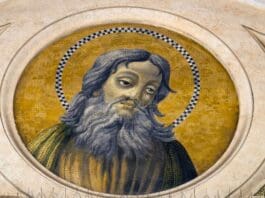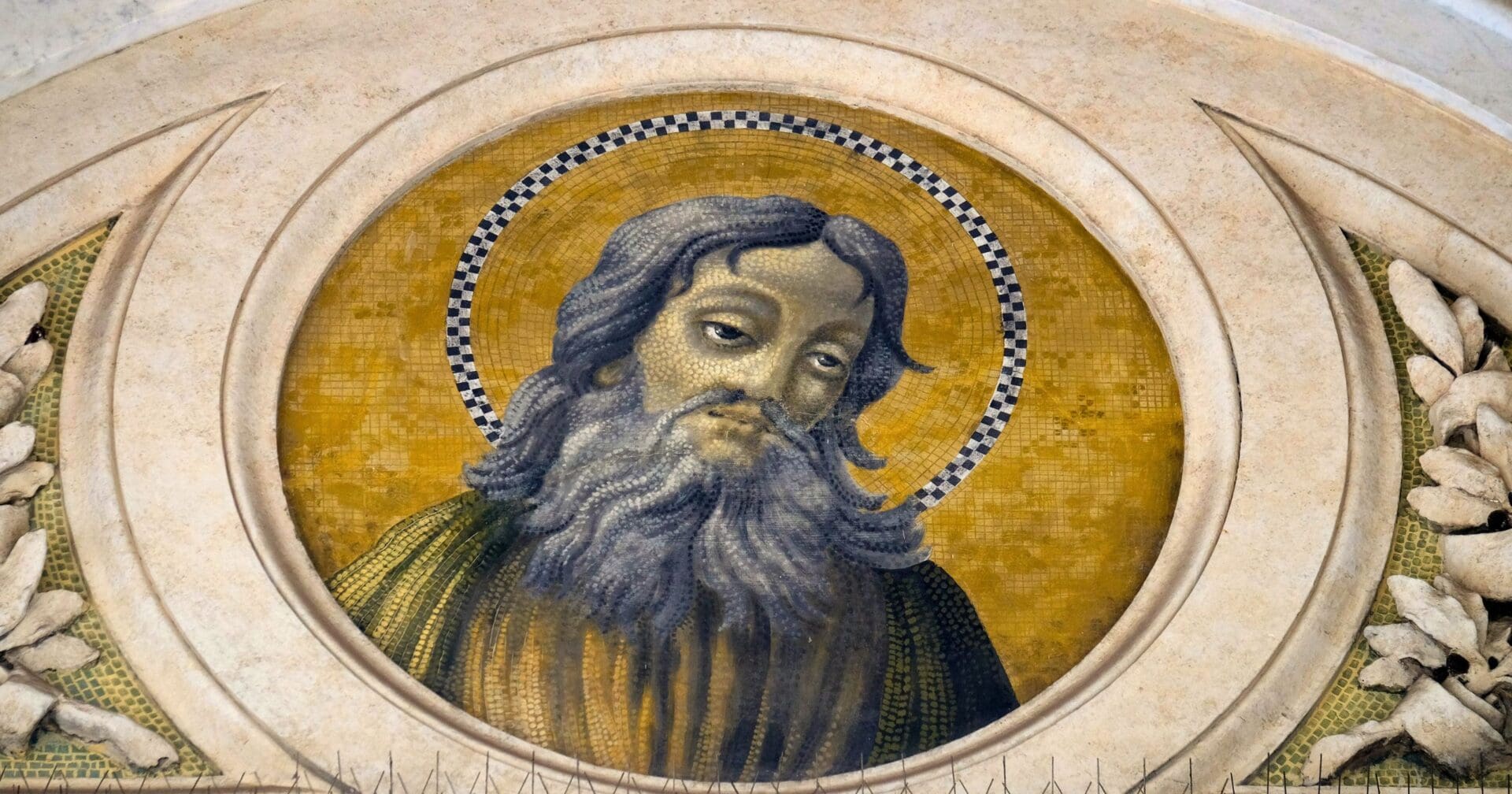
Saint Simon, also known as the Zealot, is distinctively identified to avoid confusion with St. Peter and St. Simeon, St. James the Less’s brother and successor in the see of Jerusalem. Many believe that Saint Simon received the epithet “the Zealot” prior to joining Christ’s followers, due to his affiliation with a specific Jewish sect called the Zealots. This group was noted for their fervent dedication to upholding the honor of God and maintaining the sanctity of religion. The Zealots gained notoriety during the Jewish-Roman War, where they played a pivotal role in encouraging the populace to revolt against Roman rule. They engaged in the assassination of numerous nobles and were responsible for instigating violence and profanity within the temple, actions that ultimately contributed to the downfall of their nation. Despite these historical accounts, there is no concrete evidence to suggest that such a party existed during the time of Jesus. There were, however, individuals who believed that Jews should not be subjected to paying taxes to the Romans. If there were individuals identifying as Zealots during this period, they certainly did not subscribe to the violent and inhumane principles upheld by the group described in Josephus’s account of the Jewish-Roman War.
Following his conversion, St. Simon became a fervent advocate for his newfound faith, demonstrating utmost diligence in adhering to the practices of the Christian religion. He exhibited righteous anger towards those who claimed to follow the faith yet contradicted their profession through their immoral conduct. The gospels do not provide extensive information on St. Simon beyond his appointment by Christ as one of the apostles. He, alongside the other apostles, received the miraculous gifts of the Holy Ghost, which he went on to utilize with immense zeal and integrity.
Tradition holds that St. Simon preached in regions including Egypt, Cyrene, Mauritania, and Persia. Renowned Martyrologies, authored by St. Jerome, Bede, Ado, and Usuard, mark his martyrdom in Persia, specifically in a city named Suanir, purportedly orchestrated by pagan priests. These sources, when discussing his manner of death, assert that he was crucified. Today, St. Peter’s Church in the Vatican at Rome and the Cathedral of Toulouse are believed to house the primary relics of St. Simon.
Editorial credit: Zvonimir Atletic / Shutterstock.com
The post Saint Simon the Zealot, Apostle appeared first on uCatholic.
Daily Reading
Saturday of the Thirty-third Week in Ordinary Time
Reading Rv 11:4-12 I, John, heard a voice from heaven speak to me: Here are my two witnesses: These are the two olive trees and the two lampstands that stand…
Daily Meditation
Living in Love
Click here for daily readings Is there anything better? My fiancé and I have been engaged for about four months and we are thrilled! We’ve both seen the fruits of…




